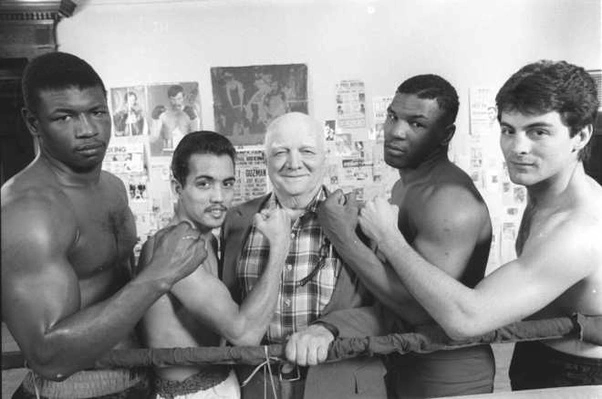“Iron” Mike Tyson, arguably one of the most famous boxers, a name synonymous with boxing greatness, rose to fame with his unparalleled style in the ring. His lethal combination of aggression, speed, and defensive tactics set him apart as a force to be reckoned with.
However, very few people know of the man behind this iconic style, the man who shaped Tyson into the legend he became: Cus D’Amato.
As Tyson’s mentor and coach, D’Amato played a pivotal role in honing Tyson’s skills and instilling in him the unique elements that defined his boxing prowess.
Tyson might have been his most famous protégé, but his other trainees include the young heavyweight champion Floyd Patterson and José Torres, light heavyweight champion of the world.
Let us take look at the life of the man who trained such legends and whose legacy influences boxing to this day.
Early Life of Cus D’Amato
Constantine “Cus” D’Amato was born in Bronx, New York on January 17, 1908 to immigrant parents. Growing up in a tough neighborhood during the early 20th century, he learned to fight to defend himself and quickly realized he had a natural talent for boxing.
D’Amato was drawn to the discipline, strategy, and the mental fortitude required to succeed in the ring. Despite facing adversity in his early years, including growing up during the Great Depression, D’Amato’s determination never wavered.
Time as an Amateur Boxer
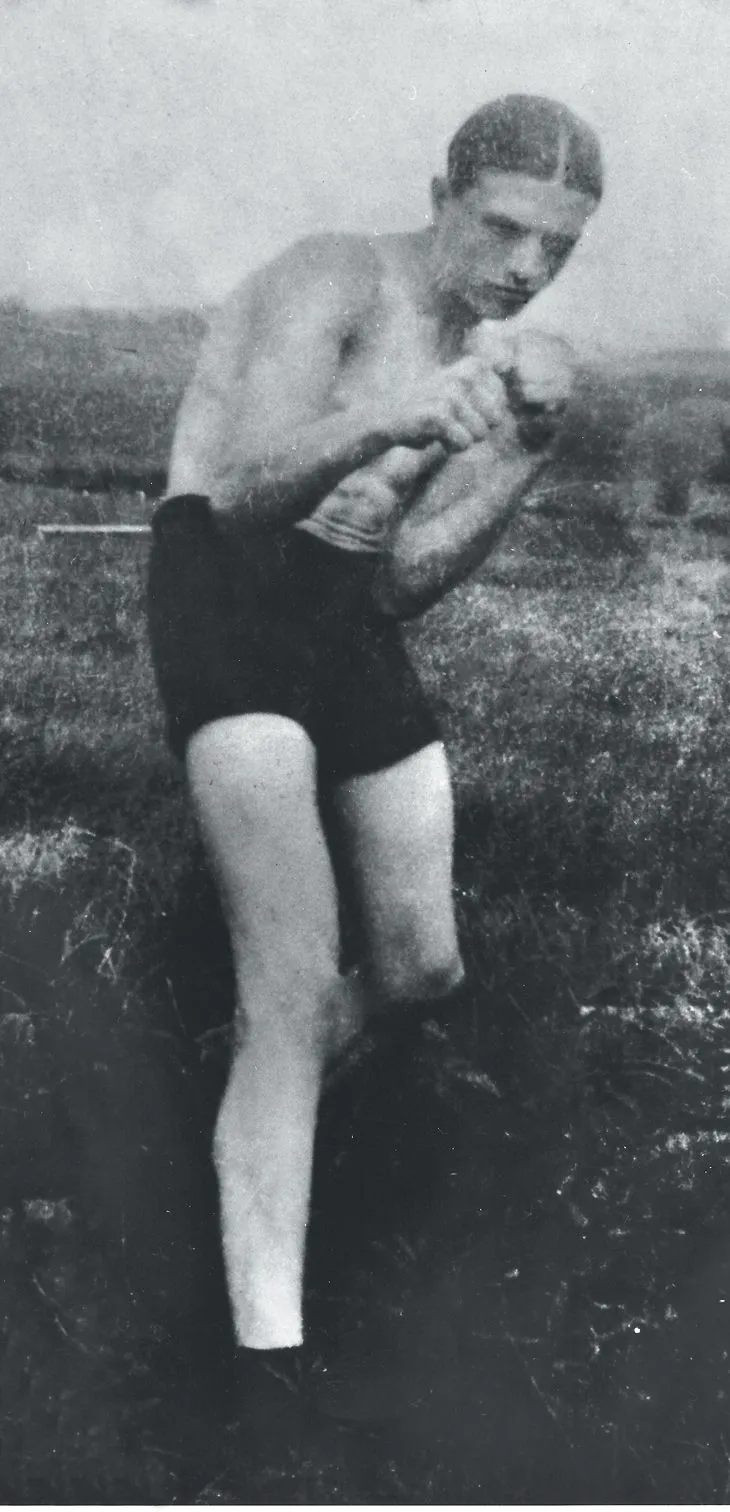
In his early career, D’Amato pursued boxing as a fighter, amassing a respectable record in the amateur ranks, fighting as a featherweight and lightweight.
D’Amato’s style in the ring was characterized by his technical skill, defensive prowess, and strategic thinking. He was known for his ability to outsmart opponents, using feints and footwork to evade punches while delivering precise counterattacks. His keen understanding of boxing strategy and his knack for analyzing opponents made him a formidable adversary.
Although D’Amato achieved success as a boxer, including winning several amateur titles, he couldn’t get a professional license because of an eye injury he had suffered in a street fight in 1920.
Coaching
Years spent boxing in the ring provided D’Amato with invaluable experience and insights, something he would use as he transitioned into coaching, beginning a career that would shape the course of boxing history.
He co-founded the Empire Sporting Club at the Gramercy Gym alongside Jack Barrow, where he dedicated himself to developing young boxers. D’Amato’s commitment to his fighters was unparalleled; he lived at the gym for years, demonstrating his hands-on approach to coaching.
D’Amato’s coaching philosophy was rooted in a deep understanding of the psychological and physical aspects of boxing. He believed that success in the ring was not solely determined by brute strength or natural talent but by discipline, strategy, and mental fortitude. D’Amato emphasized the importance of defensive skills, footwork, and ring intelligence, instilling in his fighters a comprehensive approach to the sport that went beyond mere athleticism.
Beyond his technical expertise, D’Amato possessed a rare ability to inspire and motivate his fighters. He believed in them when no one else did, instilling in them a belief in their own abilities and a relentless drive to succeed.
Cus would conduct lengthy conversations with up-and-coming boxers. In these discussions, he helped fighters resolve emotional conflicts from their personal lives. He found that any emotional distress would hinder their development as boxers. He stressed the need for fighters to listen, watch, question, and mimic the skills taught in the ring.
Philosophies and Training Methods
Cus D’Amato’s training methods were unique and highly effective. He believed in a defensive style of fighting, emphasizing the importance of avoiding punches and countering opponents’ attacks. This approach was a stark contrast to the more aggressive styles popular at the time.
In addition to his defensive philosophy, Cus D’Amato placed a strong emphasis on mental preparation and psychological tactics. He believed that a fighter’s mindset was just as important as their physical abilities, and he worked with his fighters to develop mental toughness and focus.
One of Cus D’Amato’s most famous quotes sums up his approach to training: “The man who has no imagination has no wings.” This quote highlights the importance of creativity and visualization in boxing, as well as the need for fighters to constantly push themselves and strive for greatness.
Protégés
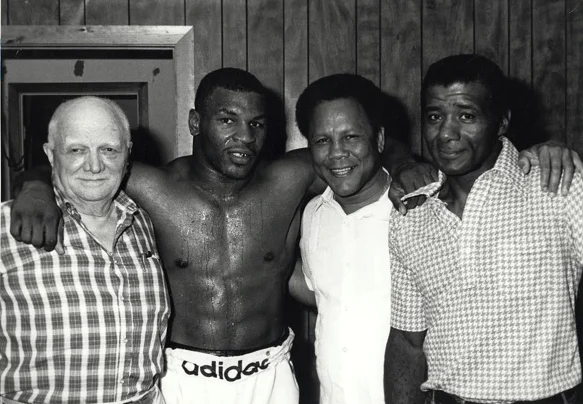
Cus D’Amato with Mike Tyson, Jose Torres and Floyd Patterson.
Cus D’Amato, a legendary boxing coach, had a profound impact on the sport through his mentorship of world-class fighters. His proteges included renowned champions like Mike Tyson, Floyd Patterson, and José Torres, among others.
Floyd Patterson: “Gentleman of Boxing”
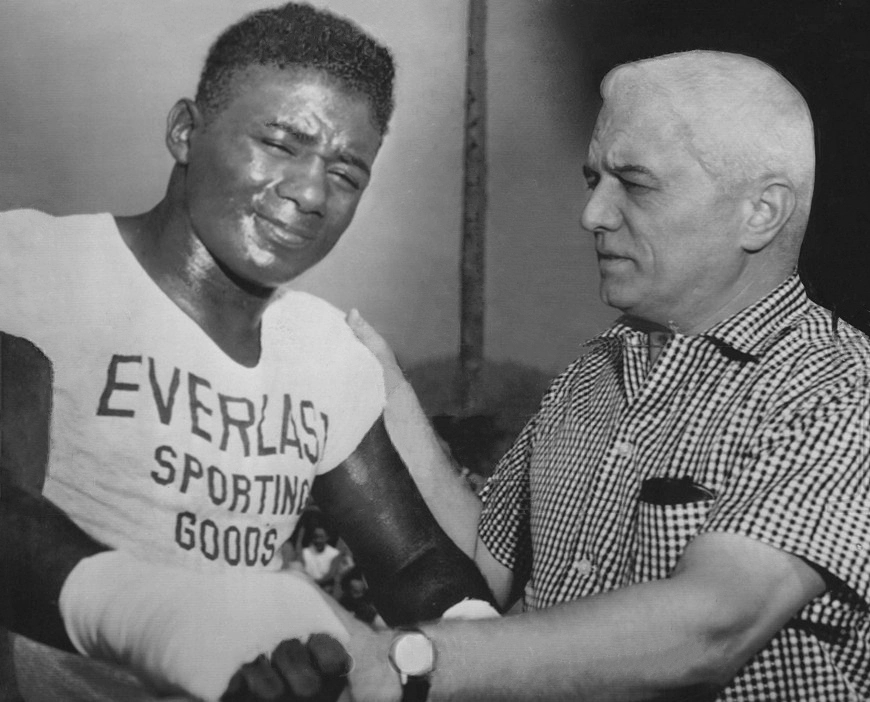
Cus met Floyd as a young amateur boxer. Eyeing potential in the shy boy, he took Patterson under his wings and guided him to middleweight Olympic gold medal in Helsinki, Finland.
Transitioning into professional boxing, Floyd fought his way up the ranks and became the youngest heavyweight champion of the world in history at that time being 21 years old. He was also the first heavyweight to regain the title after losing it.
Eventually, they went their separate ways with Floyd going on to beat Sonny Liston in two bouts, and retired after losing to Muhammad Ali.
After Cus’s death, he stated “I would never have gotten rid of Cus. My biggest regret…I never should have left Cus D’Amato.”, acknowledging the influence D’Amato had on his boxing career
José Torres
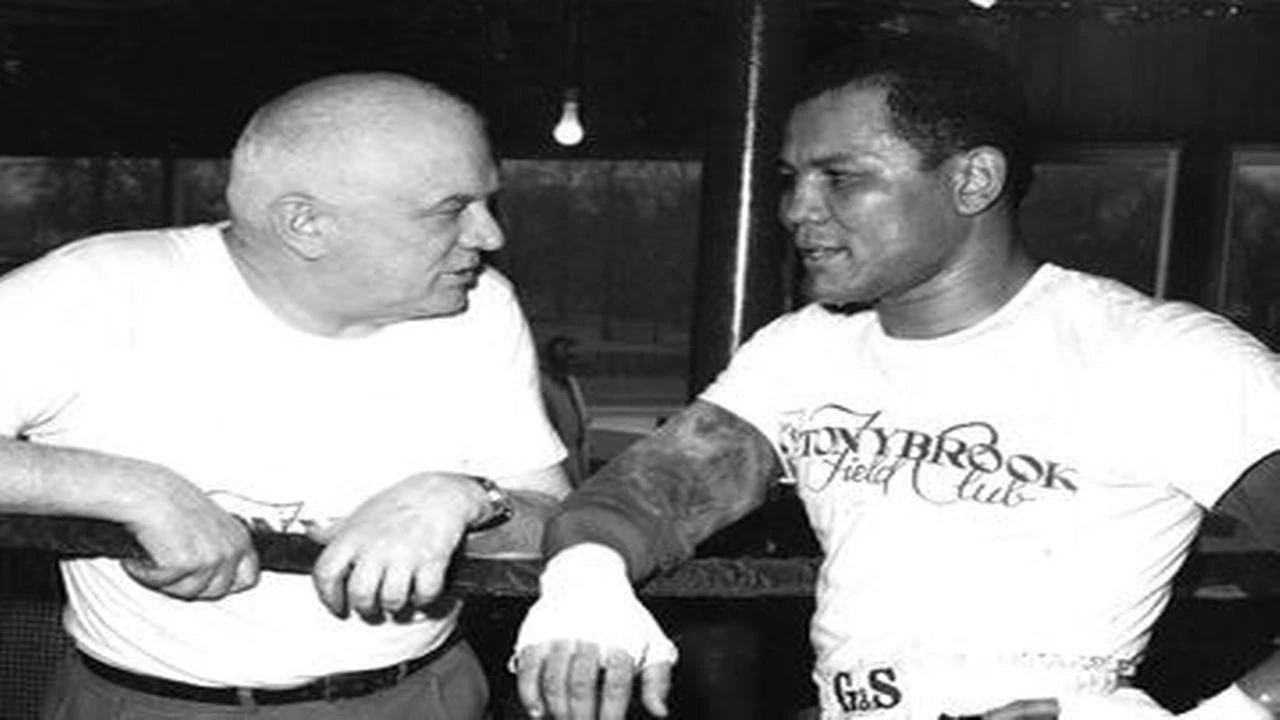
Cus D’Amato with José Torres
José Torres was a Puerto-Rican born boxer who won a silver medal in the Olympics 1956 Melbourne, while he served in the United States Army.
As he transitioned into professional boxing, he started training with Cus at the Empire Sporting Club, and knocked out George Hamilton in his professional debut.
In 1965, he would go on to defeat the Hall-of-fame boxer Willie Pastrano and became the third Puerto Rican world boxing champion in history and the first Latin American to win the world Light Heavyweight title.
“Iron Mike” Tyson
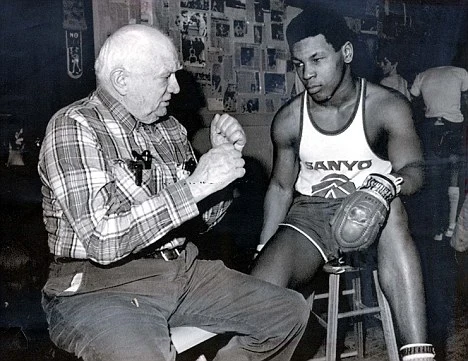
Young Tyson was a troubled youth being arrested 38 times by the age of 13. He was caught in petty crimes and fought to survive on the streets.
During his time at a reform school, his knack for boxing was discovered Bobby Stewart, a counselor and former boxer.
Stewart trained him for a few months before introducing him to Cus, thus starting the journey.
Under D’Amato’s guidance, Tyson began training at D’Amato’s gym in Catskill, New York, where he underwent a rigorous training regimen and received personalized instruction from D’Amato himself. D’Amato saw Tyson’s potential as a future heavyweight champion and became not only his trainer but also his mentor and father figure, even adopting him after his mother’s death.
Tyson had a few amateur fights and setbacks, and went on to fight professionally, becoming a respected and feared opponent.
However, in an unfortunate turn of events Cus died on November 4, 1985, aged 77. Tyson took some time off to grieve before fighting for the championship.
Tyson went onto become the youngest heavyweight champion ever at the age of 20 by defeating Trevor Berbick, fulfilling the vision Cus had for him.
After the victory, he exclaimed, “I’d like to dedicate my fight to my great guardian, Cus D’Amato, and I’m sure he’s up there, and he’s looking down, and he’s talkin’ to all the great fighters, and he’s sayin’, ‘My boy did it!”‘
Personal Life
D’Amato’s relationship with Camille Ewald was significant. Although they never married, their close friendship lasted for decades until his death. Ewald supported D’Amato’s dedication to training disadvantaged youths and provided a nurturing environment for his pupils at their home in Catskill, New York.
Known for his generosity and care for his fighters over money, D’Amato faced financial challenges that led to bankruptcy in the early 1970s. He was later supported by his business partner, Jim Jacobs. Despite financial setbacks, D’Amato’s focus remained on nurturing young boxers and guiding them towards success in the ring
Legacy and Impact
Cus D’Amato’s impact on boxing is undeniable. His training methods and philosophies have been adopted by countless fighters and trainers, and his influence can still be felt today.
In addition to his work with individual fighters, Cus D’Amato also played a significant role in the development of the sport as a whole. He was a vocal advocate for boxing’s inclusion in the Olympic Games, and he worked tirelessly to promote the sport and its athletes.
As a trainer and manager, D’Amato defied conventional norms in the boxing world. He stood against the mafia-run boxing operations and the International Boxing Club, advocating for his fighters’ interests above all else. His unorthodox training methods, business practices, and management style set him apart as a maverick in the sport. D’Amato’s commitment to going against the grain and challenging established norms left an indelible mark on boxing history.
Cus D’Amato’s legacy extends beyond the boxing ring. His emphasis on discipline, hard work, and mental toughness has inspired countless people, both inside and outside of the sport. His story serves as a reminder that with dedication and determination, anyone can achieve greatness.
Read more about Cus D’Amato here.
Read about Muhammad Ali’s training regime here.

